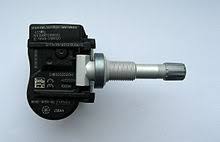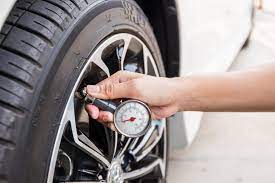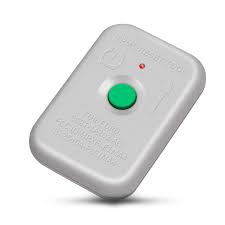How To Reset a Tire Pressure (TPMS) Light
By law all vehicles made after 2008 must have a working Tire Pressure Monitoring System (TPMS). This is to make sure that you are safe on the road as underinflated and overinflated tires can both be dangerous while driving.
In this article we will learn more about the TPMS and the issue of the warning light remaining on even after you rectified the issue. We will walk you through the simple processes of resetting this warning light to ensure it only illuminates when you need to adjust your tire pressure.
Difference Between Direct and Indirect TPMS
We will start out by discussing the two different types of TPMS as this is pertinent to the methods you would use to reset the warning light. The two types are known as direct and indirect TPMS and issues that affect them can vary.

Direct TPMS uses sensors which are located on the tire's pressure valve or the rims. These sensors collect the data regarding the air pressure in the tires and send it to the vehicle's computer. It is most common in US vehicles and often is susceptible to weather conditions.
Indirect TPMS does not measure the actual air pressure in the tire but it instead uses a calculation to convert tire rotational speed into an estimated pressure reading. Located near the ABS brakes or the wheel speed sensors they use the speed of the wheel's rotation to determine if the tire is over or under inflated.
When a tire is under inflated it rotates more quickly than when it is properly filled with air. You will find this system most commonly on European cars.
How to Reset TPMS
As mentioned all vehicles newer than 2008 are required to have TPMS but they are not all uniform and will differ by make and sometimes model of car. There are however some steps you can try which are more universal and may work on most systems.
Double Check Your Tire Pressure
You know you reset the tire pressure and after driving for a while the warning light will not turn off. You might assume the light is wrong but it is always smart to double check the pressures one more time. A slow leak may have been the cause and your tire pressure may have dropped again.

If the pressure has again dropped you may need to look into having that tire repaired or potentially replaced. No amount of reinflating of a leaking tire will allow it to hold the pressure. This will need to be fixed before the light will reset.
Use the TPMS Reset Button
If your car has a direct TPMS then it is likely there is actually a reset button located somewhere in the cabin of your vehicle. This is often somewhere under the steering wheel and by pressing it you should instantly be able to recalibrate the sensors.
If the button location is not obvious check your car's user manual and this should help you find where it is. Once located, turn on your car's electrics and depress the reset button for 3 seconds or until the warning light starts to blink. Once blinking start the engine and take a drive for 20 – 25 minutes. This should reset the system and once you return home turn the car off.
Drive the Car up to 50 mph
So if you have a freeway drive coming up you can often recalibrate the system by driving consistently at 50 mph for at least 10 miles. This should allow the system to recalibrate and the light should eventually turn off.
There are some cars that may need a higher speed and this usually only works on models with indirect TPMS. It will not work on all models however.
Electrical Reset
Sometimes we get glitches in the car's onboard computer and as any IT professional will tell you, try turning it off and on again. This is not as simple as turning the car off however as even when not in use a small amount of current is supplied to the car's computer.
In order to do this kind of reset you need to cut power to the car's computer completely to force a reset. You can achieve this by disconnecting the car battery. You only need to disconnect the negative terminal but you will also have to drain the power from the system by using your car horn until it stops sounding.
Once the horn no longer sounds, reconnect the negative terminal and your car should be reset. You will likely have to set the time on your car's clock and likely have to locate any preset radio stations you have on your radio as these too will be lost.
You May Need a Tool
Some vehicles may have a TPMS that requires a specialized tool to recalibrate it which may mean a trip to a mechanic or in some cases you can buy what you need from an auto parts supplier. TPMS reset tools can be plugged into your vehicle and used to reprogram the sensors essentially resetting them.

You can also sometimes do this reset with an OBD2 scanner tool which can also help you diagnose other issues with your vehicle. This may be a better option than a specific TPMS reset tool as it has many more functions which are helpful.
What if Basic Resets Don’t Work?
This is a good question. Sometimes the above reset methods do not work, in fact you may not even have had to change your tire pressure. If you get the tire pressure warning but the tire pressures were actually fine you may have a broken sensor.
If there was a discrepancy in the tire pressure that you rectified but all attempts to reset the system fail you may still have a broken sensor. Some of these sensors also have internal batteries which may have died.
If you suspect that your sensors are no longer working you can test this theory with an OBD2 scanner tool and look for trouble codes that relate to tire pressure sensors. If you detect an issue you may have to replace that sensor before you can reset the system and get back to normality.
Always Check Your Model's Reset Procedure
We often underestimate the value of our user manuals but they are packed with guides on how to change and reset various aspects of our cars. Look for the model specific reset procedures for your car and follow the instructions.
The methods will vary based on the age of the vehicle, its make and even the model you drive. There may be a button to press or there could be a section on your touchscreen display. Some will be simple while others are more complex.
Essentially we could not possibly list the process for all of the makes and models out there so make use of your user manual. Keeping one in your glove box is a great idea and can be very handy in an emergency.
Conclusion
The TPMS ensures that you are running with tires that are correctly inflated by telling you when they are not. It is then your responsibility to change the tire pressure. Perhaps one day we will get cars which can regulate their own tire pressures but personally I see some potential dangers in that kind of system.
Generally speaking the TPMS is easy to reset although sometimes there is a more complicated process. Hopefully our article today will help you easily reset that pesky light and get back to a confident drive.
Link To or Reference This Page
We spend a lot of time collecting, cleaning, merging, and formatting the data that is shown on the site to be as useful to you as possible.
If you found the data or information on this page useful in your research, please use the tool below to properly cite or reference Tow Ratings as the source. We appreciate your support!
-
<a href="http://towratings.net/blog/how-to-reset-a-tire-pressure-tpms-light/">How To Reset a Tire Pressure (TPMS) Light</a>
-
"How To Reset a Tire Pressure (TPMS) Light". Tow Ratings. Accessed on July 27, 2024. http://towratings.net/blog/how-to-reset-a-tire-pressure-tpms-light/.
-
"How To Reset a Tire Pressure (TPMS) Light". Tow Ratings, http://towratings.net/blog/how-to-reset-a-tire-pressure-tpms-light/. Accessed 27 July, 2024
-
How To Reset a Tire Pressure (TPMS) Light. Tow Ratings. Retrieved from http://towratings.net/blog/how-to-reset-a-tire-pressure-tpms-light/.